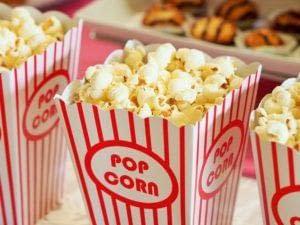
While we may believe we’re in control of what we do each day, an estimated 40-45% of our actions are actually habits. Yep, a large portion of our day runs on an intensely dedicated autopilot, resistant to change. As discussed in Charles Duhigg’s The Power of Habit, habits function in a cue-routine-reward loop. We experience a trigger for our habit (the cue), enact the habit (the routine), and reap the benefit of whatever makes us “happy” from the habit (the reward)… even if it’s simply the “happiness” of doing the habit, with any actual benefit long lost. This can lead to some uncanny activity in ourselves – sometimes fantastic, other times frustrating. (Do you smell some popcorn?)
HOW ARE HABITS FORMED?
New actions are largely regulated by our prefrontal cortex, a sentient part of the brain involved in decision-making. When performing a new action (soon to be habit?), we actively pay attention to what we’re doing, with intention. Like a fascinated child, we wonder about the outcome, taking in all the little details along the way. If the action yields a favorable outcome, we’ll probably repeat it. If we repeat it enough, the process switches from the intellectual prefrontal cortex, to the more emotional basal ganglia, a part of the brain involved in patterns, motion, and memory. When controlled by the basal ganglia, we no longer have to think our way through an action. Rather, an initial cue sparks the habit chain (our nightly TV show comes on, and we crave a snack), we effortless enact the routine (we get and eat the snack), until the habit loop is complete with a reward (we get some dopamine and/or quell our appetite from the snack.)
THE POPCORN STUDY
Habits can get pretty crazy, to the point that we will do things we don’t intend to do, and don’t even like doing!
Consider the fascinating 2011 study, The Pull o f the Past : When Do Habits Persist Despite Conflict With Motives?, conducted at the University of Southern California. (Fight on!) In the first part of the study conducted at a movie theatre, 98 participants (who thought they were attending a study of how personalities affect movie interests) received popcorn before watching 15 minutes of new movie trailers. Questionnaires revealed that the students had various historical degrees of popcorn eating habits – some often ate movie theatre popcorn, while others did not. In the experiment, half of the students received fresh popcorn, while half received popcorn that was a whopping 7 days old and stale.
Though the students across the board confessed to liking fresh popcorn much more than stale (shocker), you might not have guessed it from the results. In the experiment, students with “weak” popcorn habits who rarely ate movie theatre popcorn, ate significantly less stale popcorn compared to fresh popcorn. (Which makes sense.) Those who professed to eat popcorn moderately at movies, also ate less stale popcorn than fresh, but by a smaller margin. But most crazily, the students who professed to having strong movie theater popcorn eating habits, ended up eating the same amount of stale popcorn as fresh popcorn. They ate around 63% of the week-old popcorn! Since the study controlled for hunger, “liking” of popcorn, and even cultural perceptions of popcorn eating, it would seem that the mere habit of movie theatre popcorn eating was enough to make students happily munch away on stale popcorn.
IT’S NOT WHAT YOU KNOW… IT’S WHERE YOU KNOW?
The researchers then conducted the same experiment, except they changed the location, and thus the environmental “cue” for the popcorn habit. 60 students were given either fresh or stale popcorn before watching music videos in a campus meeting room, a location not habitually associated with popcorn eating.
And things changed.
In the novel environment of a meeting room, all students ate less stale than fresh popcorn. The students with “strong” movie theatre popcorn habits now ate half as much of the stale popcorn as fresh, unlike the movie theatre setting in which they ate the same amount. Removing the movie theatre cue short circuited the habit loop, making eating more intentional.
In a followup study, the experimenters repeated the initial movie theater experiment, yet had some students eat with their nondominant hand. They figured this would force the students to actually pay attention to their popcorn eating, and consequently break the habit routine. (They did this by constructing popcorn boxes which had to be held by a certain hand – tricky experimenters!) As predicted with the 89 students in this experiment, nondominant hand eating changed things! Those who professed to eat popcorn moderatly, now ate significantly less stale popcorn than fresh (compared to marginally less), while those with intense popcorn habits now ate marginally less (compared to the same amount).
THE TAKEAWAY?
When a habit is something you truly intend to do, like brushing your teeth or putting on your clothes or going to work, it’s like some awesome life hack you didn’t even have to research! But when a habit is something you don’t intend nor even want to do, like snacking or smoking or excess drinking, it becomes rigidly problematic. As noted in the study, “strong-habit participants acted on habitual responses in memory to such an extent that they ate even food they disliked.” We can become so ingrained in our habits, that our bodies seemingly do things against our will, which is maddeningly no fun for anyone if you ask me.
So how to break those tricky habits? I’ll save that for next time… (Teaser: It might involve environment, awareness, distraction, and/or going on vacation. Not. Even. Kidding.)

